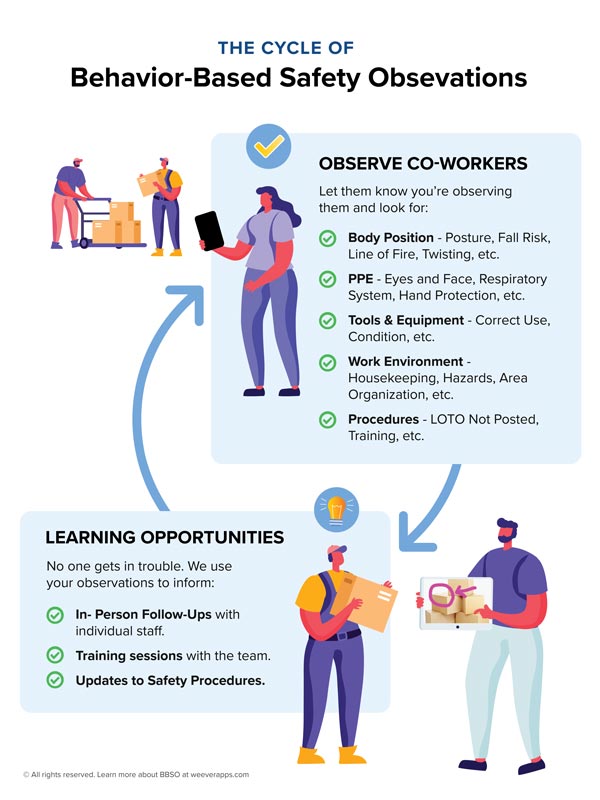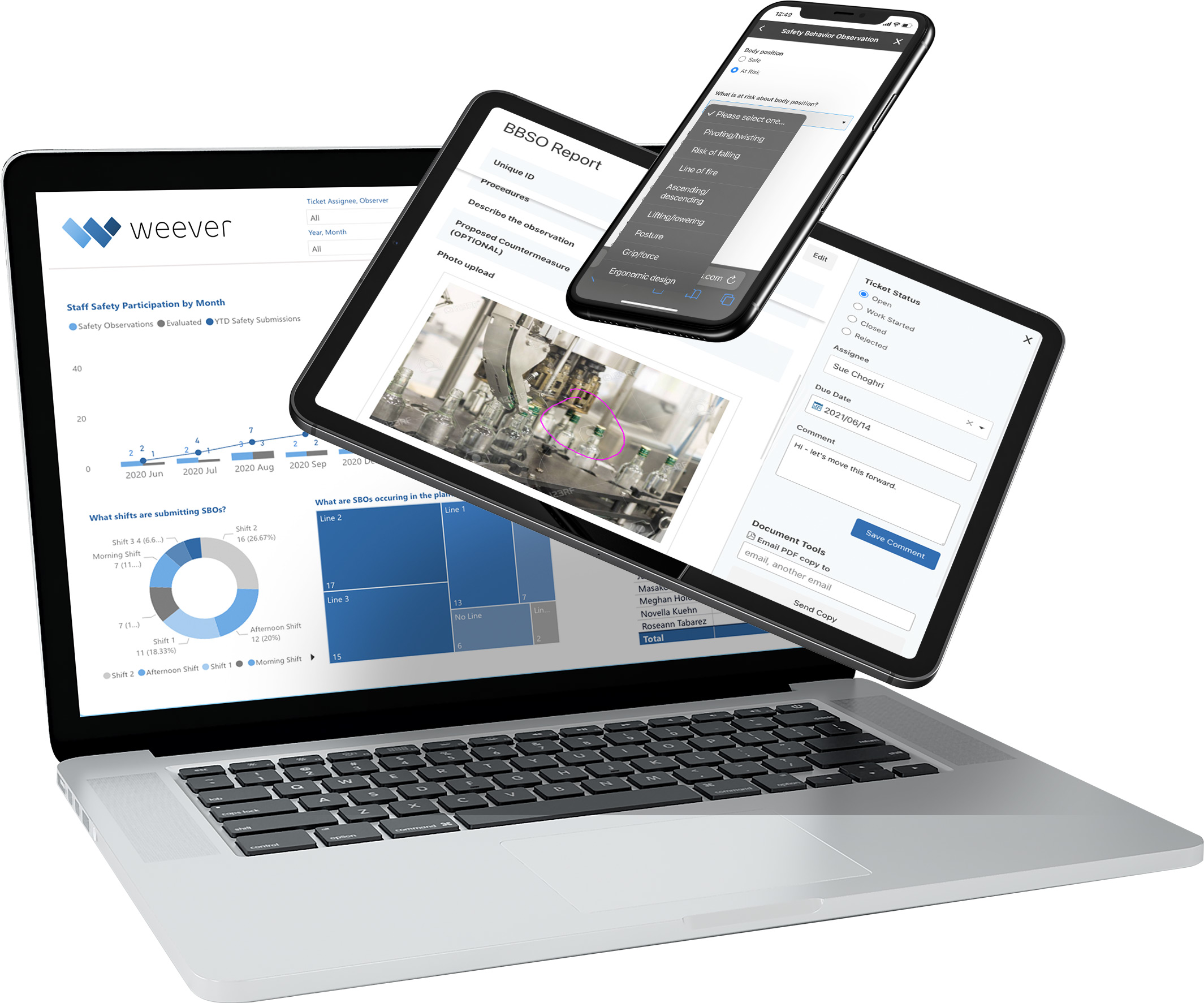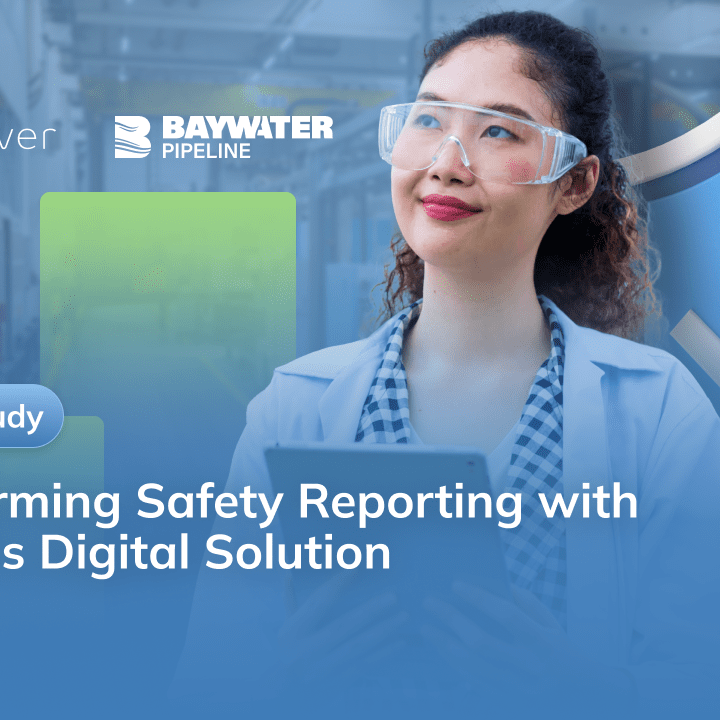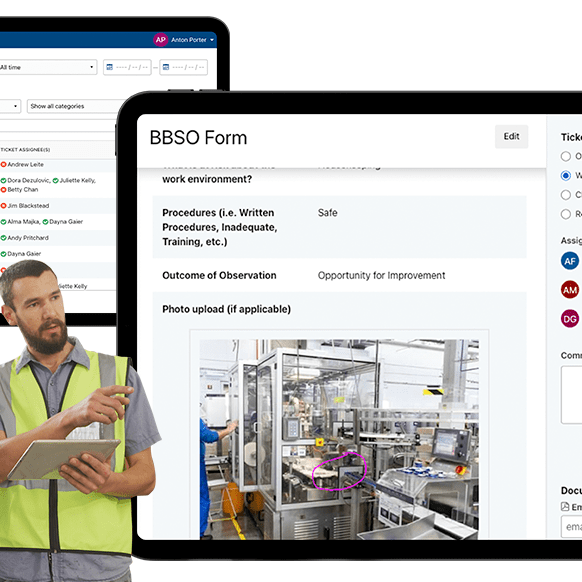1. Safety Observations
Monthly Data Capture Requirements
Safety Managers provide a bit of training around what to observe, when, and how often. Observers need to inform the observed staff members that they are being watched. While it is common that observation means that a worker will perform the task perfectly, habits and complacency can affect the outcome of the observation.
You can either select and train specific staff members to be observers or allow all staff to submit safety observations. Limiting observers makes the program a bit easier to manager but it does reduce amount of teachable moments that can arise from safety observations.
Usually, staff are mandated to submit at least 1 safety observation per month. Some organizations use a reward points to promote submissions and reduce “nagging” or negative motivation.
2. Evaluation & Action
Evaluate Submissions and Create Action Plans
When observations are submitted, Supervisors review them and create action plans. Any behaviors that present an immediate danger to the life and health of the worker, or to the environment, must be stopped immediately and a discussion between the observer and the worker regarding the matter should take place.
Upon submission, many observations will be simply closed because the observation was considered safe. At risk behaviours can create a few different action plans:
- Review best practices with observer - in some instances, the observer noted something as “At Risk” when it was not, or “Safe” when it was not. This is a great coaching opportunity for supervisors to review best practices with the observer.
- Review best practices with observed - Usually, the observer is correct and the supervisor will plan a follow up with the observed parties to review appropriate safety SOPs to avoid the situation occurring in the future.
- Create Learning Content - If a situation continues to occur, Safety Managers will create a One Point Lesson or “Toolbox Talk” session where all staff will review the best practice and sign off that they understand.
3. Showcase Results
Broadcast KPI improvements
The magic of BBSO programs comes in the feedback to staff that shows that the site is safer as a result of their work. Usually, Safety Managers can point to safety KPIs, such as near misses or incidents to show that the BBSO program is having a positive impact.




























